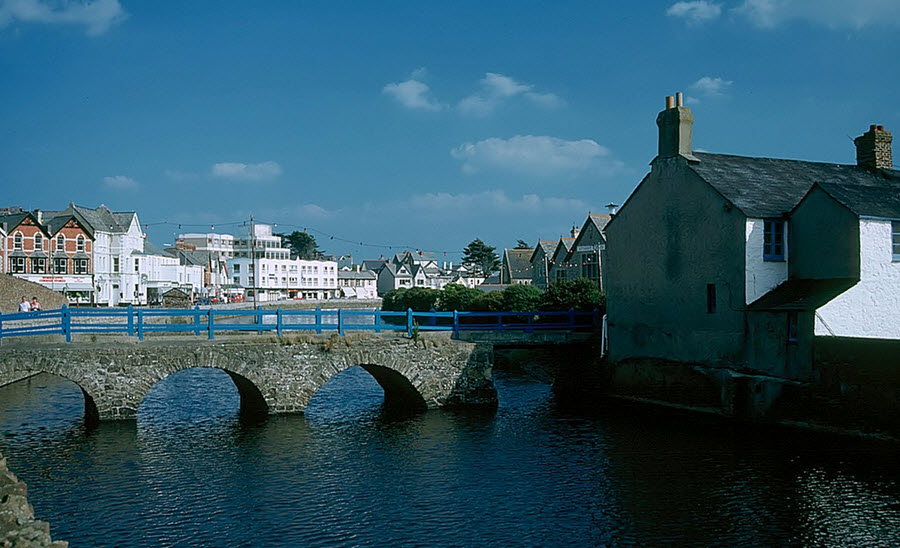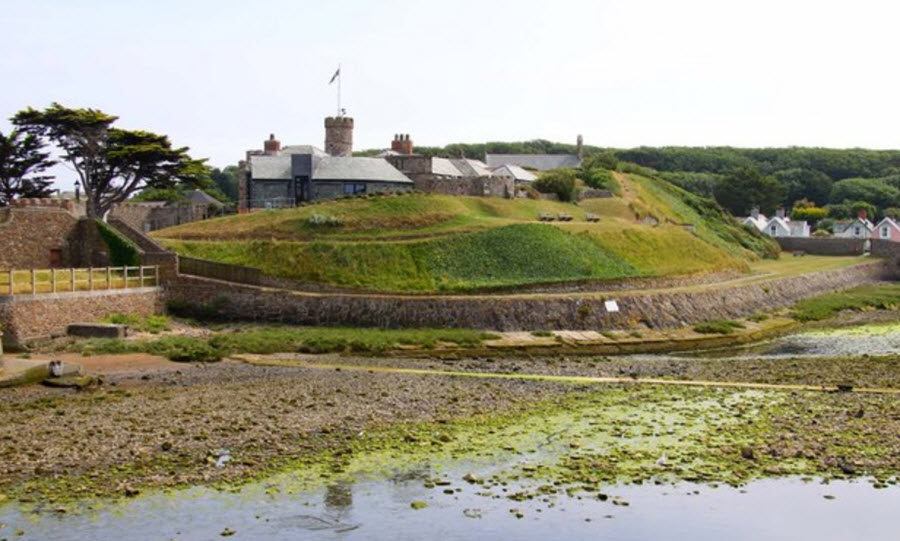Bude (Cornish: Porthbud) is a seaside town in the north-eastern Cornwall, located where the River Neet reaches the Celtic Sea. Locally, this river is also known as River Strat.
Bude developed around its harbour and was also a source of unusually mineral-rich sand used to improve the soil on Cornish farms. During the Victorian era, Bude became a popular destination for holidaymakers, and tourism began to have an impact on the local economy. Bradshaw´s Guide of 1866 describes Bude as a picturesque village with excellent facilities for bathers.
Bude has an excellent sandy beach and also great surfing opportunities. Accommodation is available for a range of budgets, and the vibe tends to be more mellow than in the more “prestigious” seaside towns of Cornwall.
During the summer of 2013, the Met Office recorded Bude as the sunniest place in the United Kingdom, with 783 hours of sun.
The Cornish coast is typically devoid of sandstone cliffs, but that is not true for Bude and its surrounding area, where sandstone cliffs are found from Hartland point (in Devon) to the north of Boscastle. You´ll find the highest cliff in all of Cornwall just south of Bude; the aptly named 735 ft (circa 224 m) High Cliff.

Where is Bude?
- Bude is located in the north-eastern Cornwall, where the River Neet reaches the sea in Bude Bay. It is the northern-most town in all of Cornwall.
- Bude is south-west of Stratton, south of Flexbury and Poughill, and north of Widemouth Bay.
- Bude is located along the A3073 and off the A39.
- Coordinates: 50.82435 -4.5413
Beachlife
The Bude area is home to several good beaches well worth a visit. If you have Bude as your base and wish to visit some nearby rustic beaches without much in the way of facilities, there is Northcott Mouth, Sandy Mouth and Duckpool. Sany Mouth (also known as Sandymouth Beach) is owned by the National Trust, and renowned for its spectacular cliffs and rock formations.
Many surfers in Cornwall have Bude as their basecamp, from which they explore northern beaches such as Widemouth Bay, Summerleaze and Crooklets. Summersleaze and Crooklets are in town, while Widemouth Bay is a few miles to the south.
The seapool
The nearby Summerleaze Beach have a 90 metre tidal seapool.
Landmarks
- The parish church St Michael and All Angels. Built in 1835 and enlarged in 1876.
- Quay Cottage, which is the oldest extant building in Bude. It is located in the centre of town.
- Bude Castle, built circa 1830. It is now a heritage site. This castle was built for the Victorian inventor Sir Goldsworthy Gurney, the man behind the Bude-Light. In 1839, Gurney patented a very bright oil lamp and named it after his hometown Bude.
- Ebbingford Manor, seat of the Arundell family of Trerice
- The former coastguard lookout at the northern-most point of Efford Down Farm. From here, you can see Summerleaze Beach and the breakwater well.
Nanny Moore´s bridge
The bridge that connects the two parts of town with each other is named after Nanny Moore, a 19th-century dipper who lived in Bude. A dipper was a strong woman who would get paid to accompany and help women who wanted to swim in the sea. There has been a bridge here for much longer than the 19th century and it remains unclear why the bridge suddenly became known as Nanny Moore´s bridge.
In the olden days, this bridge has a cantilevered section to allow boats to pass.
Names
Bude is, and has been, known under several different names. The full Cornish name is Porthbud, and the settlement has also been called Bede´s Haven. In Cornish, the term “porth” doesn´t necessarily denote a port; it can also mean a bay, haven or harbour.

History of Bude
- Some evidence indicate that this area was settled in the Bronze Age.
- During the Middle Ages, the only building here was Efford Manor, seat of the Arundell family of Trerice.
- In the 18th and 19th century, Bude was a busy porttown, utilized by smaller vessels.
- The old breakwater was destroyed in a storm in 1838, and replaced by a new version the following year.
- During the Victorian era, it became fashionable to engage in sea bathing in England, and one of the destinations sought out for this was Bude. Women would use Crooklets Beach and men Summerleaze.
- In 1926, Bude had five hotels and nearly 60 boarding houses. The hotels were the Falcon, the Commercial, Grenville, Norfolk, and Globe.
- The lido Bude Sea Pool opened in 1930.
- The first Surf Life Saving Club was established in Bude in 1953.